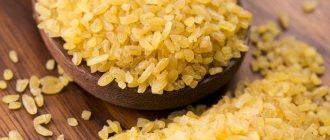Vegetable growing » Eggplant
0
952
Article rating
Kira Stoletova
Eggplant is a perennial herbaceous plant of the Solanaceae family, the fruits of which are used in cooking. The vegetable contains many useful microelements. The calorie content of eggplant is taken into account when preparing diets for weight loss and treatment prevention. It changes depending on the cooking method.
Calorie content and composition of eggplants
What are the benefits of eggplant
Eggplant is a very healthy product. It is recommended for people with heart and vascular diseases. After all, eggplant contains useful substances, primarily potassium, which has a positive effect on heart function and the normalization of water-salt balance (for edema).
Eating eggplant helps reduce bad cholesterol. This fact makes the vegetable one of the main ones in the diet of people suffering from atherosclerosis. In addition, the substances contained in eggplants have a beneficial effect on the production of blood cells, which increases the hemoglobin content.
Eggplant is useful for people with problems in the digestive system. It has very soft fibers that cleanse the intestines without disturbing the integrity of the mucous membrane.
It is important that the vegetable retains its beneficial properties even after heat treatment. You need to use young eggplants or fruits of medium ripeness. Overripe ones are saturated with solanine (it is what gives these vegetables their bitterness).
Harm of eggplants
- Eggplant is a close relative of potatoes; it also contains a toxic substance called corned beef, which can cause severe poisoning;
- On potatoes, signs of the disease are visible in the form of green spots, but the eggplant peel is dark in color, and it is difficult to recognize a diseased vegetable, so it is recommended to eat only young and fresh fruits, and either throw away or peel the old ones;
- The beneficial fiber in eggplant can be harmful to people suffering from stomach diseases; coarse dietary fiber is difficult to digest; increased intestinal activity can cause aggravation and pain;
- For the same reason, the vegetable should not be given to small children under three years of age, their digestive system is not yet able to cope with such a heavy product;
- If you are prone to the formation of stones, you also do not need to get carried away with eggplants, they contain a small amount of oxalic acid, it tends to crystallize and settle on the organs of the urinary system;
- In order not to harm your health, it is enough to consume no more than 200 grams of this vegetable per day.
Calorie content of eggplants
Let's look at what nutritionists say about this vegetable. Eggplants, whose calorie content is 24 kcal per 100 grams, have the so-called negative calorie content. This is a phenomenon when the body needs more calories to process a product than it contains.
The fiber found in eggplant allows you to give the body a fairly long-lasting feeling of fullness. Moreover, a person does not feel “heavy” in the stomach, as happens when eating meat. On the contrary, when a person eats eggplant, he is not overcome by the feeling of overeating: the food takes a long time to digest, but quite easily.
Let us clarify that we are talking about raw eggplants; the calorie content per 100 grams was indicated for them. Unfortunately, they cannot be used that way. However, you should take into account the energy value when combining eggplants with other products during cooking. Cooked vegetables have slightly higher calorie content. But this does not in any way reduce their beneficial effects on the body. Fortunately, there are a huge number of eggplant dishes. Their calorie content is different. Let's consider this parameter from the smallest to the largest.
Composition and nutritional value
Calorie content of eggplants: per 100 g of raw product - 25 kcal. This is a small part of the daily requirement, so the vegetable is considered low-calorie. The glycemic index allows you to eat the product if you have diabetes.
Energy value of eggplant (BJU indicator) per 100g:
- proteins – 1.18 g (4.8 kcal);
- fats – 0.097 g (1.3 kcal);
- carbohydrates – 4.61 g (18.2 kcal).
Nutritional value of eggplant (g):
- dietary fiber – 2.45;
- water – 93.4;
- ash – 0.46;
- monosaccharides and disaccharides – 3.55;
- starch – 1;
- organic acids – 0.18.
Vitamin composition (mg):
- vitamin A – 2.8;
- vitamin C – 4.7;
- vitamin PP – 0.018;
- vitamin B1 – 0.05;
- vitamin B6 – 0.18;
- vitamin B9 – 18.6;
- vitamin E – 0.17;
- beta-carotene – 0.22.
Mineral composition (mg):
- zinc – 0.3;
- calcium – 15;
- potassium – 240;
- manganese – 0.22;
- iron – 0.5;
- aluminum – 816;
- fluorine – 11;
- iodine – 2.3;
- boron – 102;
- sodium – 5;
- phosphorus – 35;
- magnesium – 10;
- copper – 136;
- cobalt – 0.8;
- sulfur – 15.
Stewed eggplants: recipes and calories
Stewed eggplants have the lowest calorie content. 100 grams of the dish (without any other vegetables) contains only 41.3 kcal. You can prepare eggplants this way in different ways. If you intend to consume as few calories as possible, it is better to cook without or with minimal use of oil. Using non-stick cookware will also help reduce the calorie content of stewed eggplants; you can use a multicooker for the same purpose.
The recipe is simple: cut the eggplants as you wish (into slices or small pieces). Next, you need to place them in a frying pan greased with vegetable oil (if you are using non-stick cookware, you can skip this step). Add half a glass of water, salt, add your favorite spices and simmer over low heat until tender - about 30-40 minutes. Eggplants prepared in this way will have a calorie content of about 45 kcal.
You can diversify the stewed eggplants by adding onions, carrots, bell peppers and tomatoes, salt and add a little water so that the vegetables do not burn. Chop the greens 15 minutes before the end of cooking. The calorie content of such a dish will be about 170 kcal.
Dietary eggplant dish: raw caviar
For 1 kg of eggplant you need 0.5 kg of bell pepper, 0.5 kg of fresh tomatoes, 2-3 medium-sized onions, a medium-sized head of garlic, fresh herbs (dill, parsley), 2-3 tablespoons. spoons of vegetable oil, ground pepper, salt to taste. Bake eggplants and peppers in the oven or in a frying pan with a thick bottom under a lid without adding oil, cool, drain, peel and seeds, chop finely. Scald the tomatoes with boiling water, remove the peel, and chop finely. Grind the onion, garlic and herbs in a blender. Mix everything, let it sit, drain the liquid, season with vegetable oil, pepper, and add a little salt.
In eggplants prepared in this way, the calorie content is 40-45 kcal per 100 g of product, and all useful substances are preserved as much as possible.
Due to the pleasant taste of eggplants after cooking, their high content of beneficial microelements, vitamins and fiber, and the low calorie content of eggplants, dishes made from them are included in the menu of many weight loss diets and in health-promoting diets.
Thanks to this, Russian cuisine is rich in recipes for various dishes with the addition of eggplants and using them as the main product.
Eggplant caviar: recipes and calories
After stewing, the next cooking method that is suitable for people who care about their figure is eggplant caviar. Its calorie content varies from 46 to 148 kcal. It all depends on the method of preparation and the ingredients used. Thus, eggplant caviar prepared for direct consumption in a slow cooker or non-stick frying pan will have the lowest calorie content.
The recipe for such caviar is as follows: fry the onion, add carrots to it, then eggplants, green peppers and chopped tomatoes (use a blender or grate them, after removing the skin). You also need to add salt, a teaspoon of sugar and herbs to taste. Simmer everything together for 40 minutes over low heat.
You can prepare such healthy eggplant caviar for the winter. The calorie content of such a dish reaches 150 kcal. The thing is that using a large amount of vegetable oil, as well as vinegar, is necessary for preservation. The remaining ingredients and cooking principle remain the same.
Benefits and harms
The benefits and harms of eggplants directly depend on the methods of their preparation, as well as on how ripe the fruit is. In fried eggplants, the fiber is destroyed, and the flesh is almost completely saturated with toxins from the frying oil. The calorie content in such a dish is several times higher than in just raw eggplants. This method of preparation will be especially harmful for those who have problems with the gastrointestinal tract.
If you suffer from ulcers or gastritis, do not under any circumstances eat raw or fried eggplants.
Eating overripe eggplants is also dangerous due to the solanine content they contain. This toxic substance can cause: colic, vomiting, diarrhea, convulsions and exacerbation of individual diseases. White eggplants do not contain poisonous solanine and have the same amount of nutrients as purple ones.
Baked eggplants: recipes and calories
The next cooking method is baked eggplants. Their calorie content is from 66 kcal per 100 grams. As with previous methods, further energy values will vary depending on the additional products used.
A classic recipe for oven-baked eggplants: cut the vegetables lengthwise (you should get plates), grease them with vegetable oil (preferably olive oil), grate them with grated garlic, cut them crosswise, place them on a baking sheet and put them in the oven. After 15-20 minutes, take out the finished dish and sprinkle with chopped herbs.
You can add the filling when you bake the eggplants in the oven. The calorie content will then be slightly higher. The filling can be tomatoes, grated cheese, mushrooms, minced meat - the imagination here is limitless.
As an example, here is a recipe for eggplant “boats”, the calorie content of which is only 83 kcal. So, cut the washed eggplants lengthwise into two parts, cut out the core, leaving about 1 centimeter from the edges. Place the “boat” pieces in the oven for 20 minutes. For filling, chop tomatoes (without peel), mushrooms (preferably champignons), garlic and herbs. Fry, adding eggplant pulp. After 20 minutes of stewing, mix with minced meat (it is better to give preference to low-fat). We fill the eggplant halves that are ready for this moment, pour in cream (10%), sprinkle with cheese and set to bake for 30 minutes.
Eggplants in the diet of those watching their figure
Just because this product is not consumed raw, one cannot consider the caloric content of only a fresh vegetable: it should be taken into account when choosing ingredients and their quantities in a recipe, but the figures for a ready-made dish among those losing weight will be more relevant. And first of all, you need to indicate the calorie content for fried eggplant, since this is the method of heat treatment that is in greatest demand. You can prepare it, of course, in different ways, but the basics remain the same: a small amount of vegetable oil, salt, pepper, a frying pan and vegetables cut into slices. In combination with other vegetables - tomatoes, zucchini, pumpkin - the calorie content of fried eggplant will vary depending on the other components of the dish. And for a single fried eggplant, the calorie content will show 129 kcal per hundred grams. In this case, you should be afraid not so much of the number, which is not so scary, but of the increasing percentage of fat content in the dish.
You can reduce the calorie content of fried eggplant to 91 kcal if you first soak it in very salty water. This method is usually used to remove bitterness from vegetables, but few people know that it also helps form a film that prevents the product from absorbing excess oil. Therefore, both the fat content and calorie content of eggplant will not be as high as without pre-treatment.
As for the stewed eggplant, its calorie content in a solo version will be 45 kcal, which can be either lowered or increased. For example, when combined with onions and green onions, grated carrots, red bell peppers, tomatoes and a spoon of olive oil, the calorie content of stewed eggplant will show 39 kcal. This dish can be an excellent side dish for steamed low-fat fish or white poultry meat, making them easier to digest and at the same time not significantly increasing the calorie content of lunch.
Baked eggplant is not much ahead of stewed eggplant in terms of calories and even wins if it is grilled and without fat: in its pure form it “weighs” about 21 kcal per hundred grams. That is why various kinds of recipes for stuffed eggplant or rolls with its participation in the oven are so popular. Let's say, having a filling in the form of tomatoes, carrots, grated cheese, various seasonings, garlic and herbs, a baked eggplant without oil will have a calorie content of only 157 kcal.
3.9 out of 5 (9 Votes)
Eggplants have long ceased to be the overseas delicacy that Ivan Vasilyevich enjoyed in the film of the same name. And now they can be found in the kitchens of many housewives. Which is no coincidence, because the vegetable is very tasty and contains a lot of useful substances.
Fried eggplants: recipes and calories
The heaviest dish in terms of energy value is fried eggplant. Their calorie content is from 80 kcal. You can prepare eggplants in this way in various variations; let’s look at the most popular ones.
If you just want to fry the eggplants, you need to cut them into slices, salt them and fry them in vegetable oil.
You can diversify the preparation by using batter: egg, flour and milk.
If you add fried eggplants with tomato, garlic and mayonnaise, the calorie content will be about 140 kcal. This dish is also called “Mother-in-law’s tongue.” The recipe is as follows: cut the eggplants into slices, about 0.5 centimeters thick, add salt and fry in vegetable oil. In a separate bowl, mix mayonnaise with garlic and salt. Brush fried eggplants with this sauce, place tomato slices on top, and garnish with herbs.
A variation of this recipe is the Peacock Tail dish. In this case, before frying, the eggplants must be cut not across, in circles, but along, in plates. Next - the same manipulations. When serving, the dish is laid out in the shape of a peacock's tail. If desired, after collecting the “tail”, you can sprinkle it with grated cheese and bake for 15 minutes in the oven - this will give the dish an elegant look.
Benefits and harms for losing weight
Eggplant is a low-calorie product, so it is considered a dietary product and is recommended to be included in the diet of people who want to lose excess weight. In addition, eggplants contain substances that promote the breakdown of fat. Of course, eating vegetables will have the exact opposite effect if they are not prepared correctly. You need to once and for all give up frying in a pan, baking with fatty cheeses and cottage cheese. In fried eggplant, fiber is destroyed and toxins accumulate. Therefore, it is useful to steam, grill, stew along with other vegetables, mushrooms, and lean meat.
If you cannot do without oil, you can replace vegetable oil with olive oil. Adding spices such as black pepper, cinnamon and turmeric will also help. They reduce appetite. The high amount of fiber in the product has an undoubted benefit for weight loss. It helps remove waste and toxins from the body, prevents constipation, and improves the functioning of the gastrointestinal tract as a whole. The eggplant diet is quite simple.
You should include this product in your main course for lunch. For dinner, replace your usual dish with an eggplant dish. This diet correction allows you to lose from 3 to 5 kg per month.
However, for people with sensitive digestion, gastritis and ulcers, excessive consumption of eggplant can be harmful. You should beware of exacerbation of chronic diseases and diarrhea. Therefore, if discomfort occurs, you should temporarily abandon the product and limit its use in the future. Individual intolerance to the product also sometimes manifests itself. There is nothing you can do about this; you will have to stop eating the vegetable.
When purchasing, you should pay attention to the appearance of the vegetable. It shouldn't be overripe. This fruit has a brownish skin color, large seeds, and a stale stalk. The danger lies in the fact that they accumulate a substance dangerous to humans - solanine. Poisoning varies in severity, from nausea and diarrhea to seizures and confusion. A good fruit has a blue-black shiny peel of a rich color, light flesh, and small soft unripe seeds. Although eggplants of different varieties and maturity may have different peel colors (from white to dark purple), it is generally accepted that the blue-black fruits are the most delicious.
Thus, eggplant is an excellent product containing all the elements beneficial to humans, so the vegetable must be present in the diet of people leading a healthy lifestyle.
You will learn more about the composition of eggplants in the following video.
Eggplant is everyone’s favorite product with a pleasant taste and excellent dietary properties. To properly organize your diet, you need to have maximum knowledge about healthy foods. From this article you can find out the benefits of eggplant. Calorie content in 100 grams of product and many other interesting facts are discussed below.
Eggplant: General Cooking Tips
Professional chefs have several secrets in preparing eggplants. They will help make dishes not only tasty, but also reduce their calorie content.
- Choose the right eggplants. Remember that only medium-ripe eggplants are edible. This can be determined by the stalk. It should have a rich green color; under no circumstances use a vegetable with a dry stalk. The color of a good, high-quality eggplant is rich and uniform. The vegetable should be meaty and quite heavy.
- After cutting the eggplants, sprinkle them with lemon juice. This will prevent them from darkening.
- Use enamel or glass dishes when serving. This way, excess fat will not accumulate in the dish.
- You can reduce the calorie content of an eggplant dish. To do this, they are thoroughly dried and dipped in egg white.
- Salt will help remove bitterness - soak the eggplants in it for 20 minutes before cooking, then rinse well. In addition, this method will prevent vegetables from absorbing large amounts of oil when frying.
- Remember, eggplants are contraindicated for people with peptic ulcers, gastritis and problems with the pancreas.
Dietary eggplant dishes
Due to their good taste and low calorie content, eggplants are very popular in the menus of cuisines around the world. Eggplants go well when cooked with other vegetables; they can be boiled, fried, baked, stewed, or grilled. Eggplant is one of the few vegetables that is not eaten raw. That is why it does not matter much how many calories are in eggplants; what is more important is how many calories the dishes prepared from these vegetables contain.
Despite the low calorie content of eggplants, it should be borne in mind that during cooking they absorb oil very strongly, which greatly increases the calorie content of dishes. It is recommended to soak the eggplants in salted water before cooking. This will remove bitterness from vegetables and reduce the absorption of oil during cooking, reducing the calorie content of cooked eggplants.
The best dietary dishes from eggplants (nourishing and healthy) are obtained by boiling, baking or grilling, when you can do without the use of oil.










